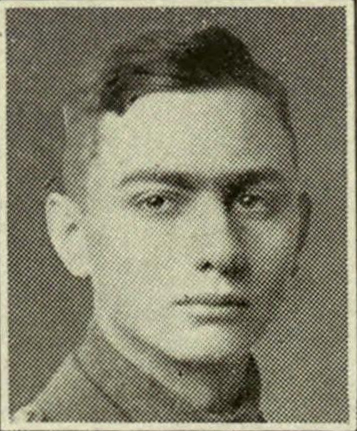N. Cairns
Service no. 76551
Gunner, Royal Garrison Artillery, 279th Siege Bty.
Killed in action in the field age 22 on 26 June 1917
Husband of Florence Cairns (nee Penton), of 47 Courland Grove, Larkhall Lane, Clapham, London.
Remembered at Vlamertinghe New Military Cemetery, Belgium
British Army WWI Service Records, 1914-1919
When he enlisted on 26 April 1916, Norman Cairns was a butcher, living at 38 Bromfelde Road.
He was 5 feet 10 and a half inches tall.
He married Florence Penton on 26 December 1914 at the Wesleyan Chapel on Clapham Road.
Service record
25 December 1916 Posted to British Expeditionary Force
14 April 1917 Hospitalised with gunshot wound to the shoulder
25 April 1917 Invalided to EnglandHe was returned to the field (date illegible).
On 19 December 1917 the Officer in Charge of Records wrote to Norman Cairns’ widow enclosing her husband’s personal belongings: a coin disc, a pocket book, a religious book, penknife, cigarette holder and cigarette case. The British War and Victory medals were sent on 8 September 1921.
In his service declaration Norman claimed he had no siblings. However, the 1901 census shows that he had both a brother and a sister. (The 1911 census shows that Norman’s mother Mary had 8 children, 6 of whom survived in 1911.) In 1901 Norman was 7 and living at 34 Thorparch Road. His father, John D. Cairns, 54, was an engine fitter born in Newcastle. His wife, Mary, 51, was born in Stratford, Essex. Norman’s brother Frank J. Cairns, 18, was a grocer’s assistant born in Fulham; his sister, Florence Blebta, 31, was born in India. Her two children, Franz Blebta, 7, born in Clapham and Wenzl Blebta, 5, born in South Lambeth, lived with her.
The Commonwealth War Graves Commission database shows that a W. Blebta (William Blebta according to the Soldiers Died in the Great War database) died on 21 March 1916. His details are as follows:
Service no. 2137
Private, London Regiment, 1st/23rd Battalion
Son of Henry and Florence Blebta, of 63 Lynette Avenue, Clapham, London.
Information from the 1911 census
In 1911 Norman Cairns, 17 and working as a butcher’s apprentice was living at 9 Gaskill Street, Larkhall Lane, London SW4, where the family occupied 3 rooms. His father, John Dickinson Cairns, 64, was an engine fitter and night watchman for the London and South West Railways. He was born in Newcastle upon Tyne. Mary Cairns, 61, was born in Stratford, east London. Franz Blebta, 17,a butcher’s apprentice, and Wenzl Blebta, 15, unemployed, grandsons of John and Mary, also lived in the household.
Florence Blebta, 36, mother to Franz and Wenzl, was working for the Shillington family as a live-in housemaid at 31 Spencer Park, Wandsworth. She married Henri Wenzl Blebta in 1895 in Lambeth. He does not appear on the 1911 census, although he is named in the Commonwealth War Graves Commission database.


 In 1922 Dr Foord Caiger donated the four-faced clock to the Stockwell War Memorial fund in memory of his son. “I… shall be very pleased to give it as a tribute to the memory of my only son, who fell in the battle of the Somme at the early age of 19.” he wrote to Samuel Bowller, secretary of the Memorial Committee. “The idea of placing a clock … struck me as such a ‘live’ and appropriate tribute to one who was born and always lived in Stockwell, and who entertained a warm affection for his home.”
In 1922 Dr Foord Caiger donated the four-faced clock to the Stockwell War Memorial fund in memory of his son. “I… shall be very pleased to give it as a tribute to the memory of my only son, who fell in the battle of the Somme at the early age of 19.” he wrote to Samuel Bowller, secretary of the Memorial Committee. “The idea of placing a clock … struck me as such a ‘live’ and appropriate tribute to one who was born and always lived in Stockwell, and who entertained a warm affection for his home.”